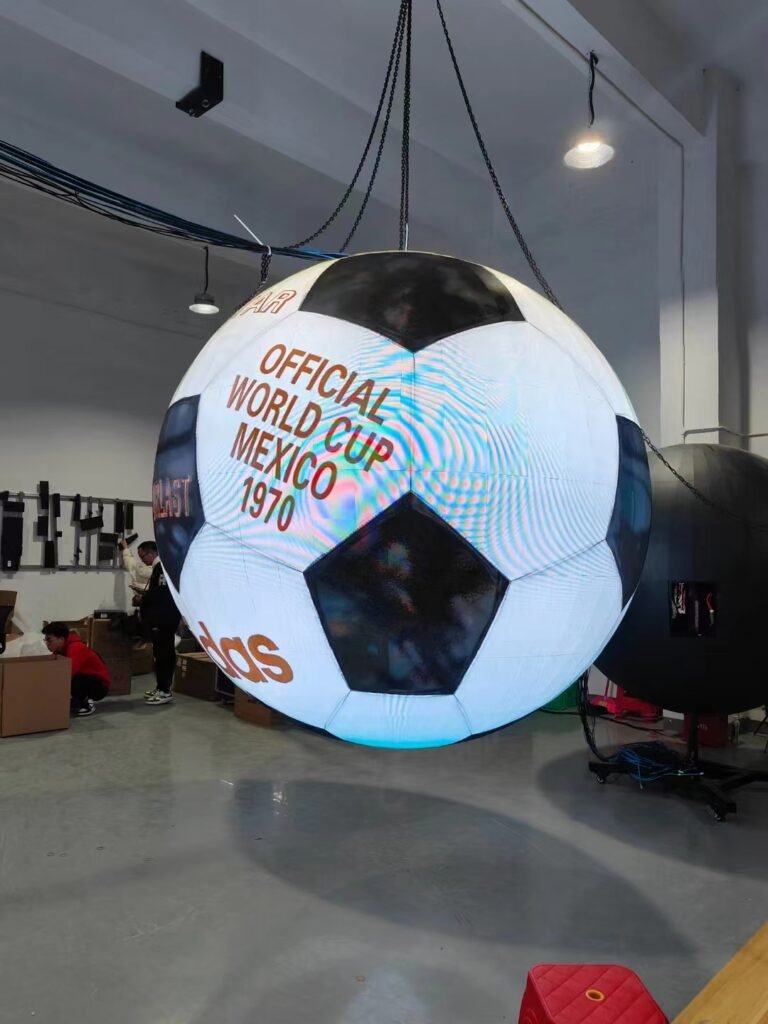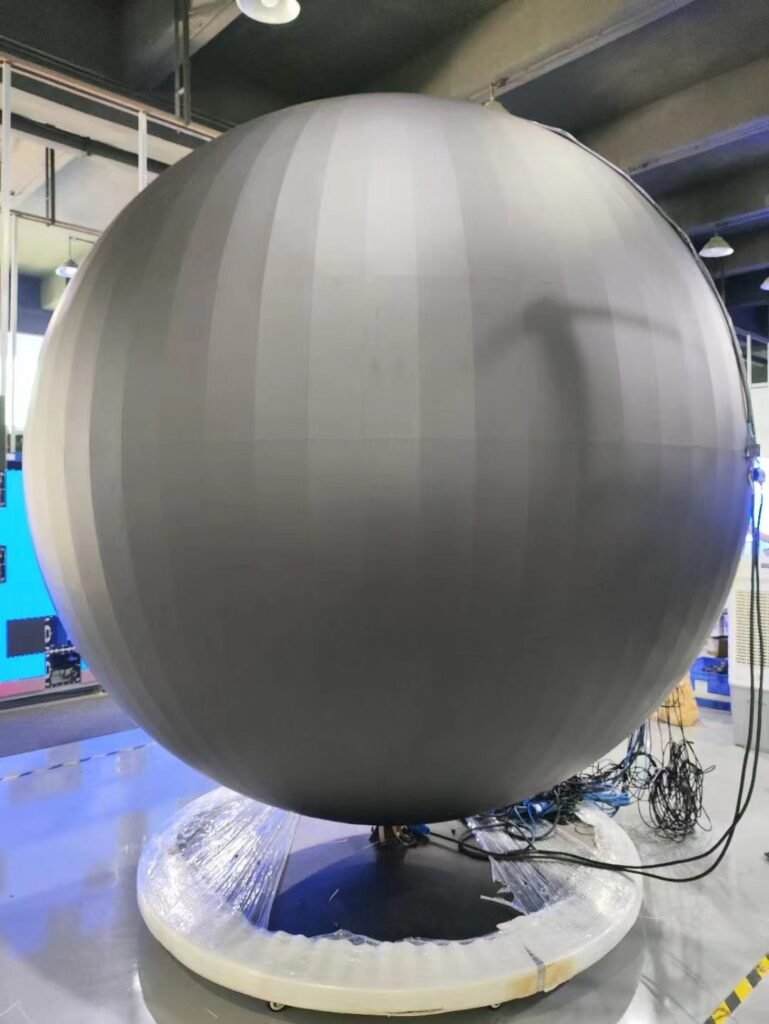
With the rapid development of modern technology, spherical LED displays have gradually become the focus of more and more occasions with their unique appearance and excellent visual effects. The hot discussion on social networks about the giant spherical LED display in Las Vegas is a good example. In addition to this world’s largest spherical LED display, we can also see many spherical LED displays of different sizes and shapes in our daily lives. Next, JERYO will explore the types, principles, advantages, and market prospects of spherical LED displays.
The difference between spherical LED display and traditional LED display
Shape and Design: Traditional LED displays are flat, while spherical LED displays break this limitation and provide a wider viewing angle.
Display range and angle: The spherical design allows viewers to see the complete image from all angles, improving the viewing experience.
Production difficulty and cost: The manufacturing process of spherical LED display is complex and the cost is relatively high, which is suitable for high-end applications.
Application areas and flexibility: Spherical LED displays are more advantageous in specific occasions such as planetariums, art exhibitions, etc.

Advantages of spherical LED display
Comprehensive visuals: Provides 360-degree display, allowing for clear images regardless of viewer position.
Greater flexibility: The size and resolution can be customized according to needs to adapt to different application scenarios.
Perfect splicing: Special technology is used to achieve seamless splicing and enhance the overall visual effect.
Energy saving and environmental protection: LED lamp beads are energy-saving and have a long service life, which is friendly to the environment.




